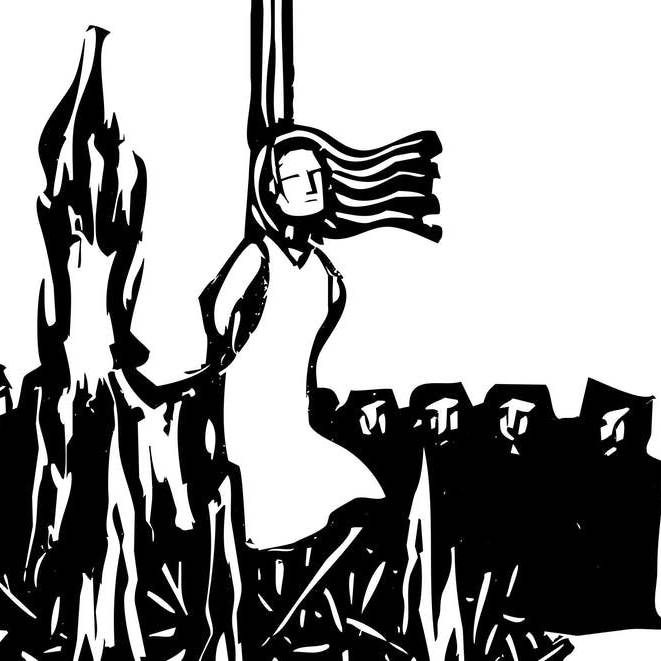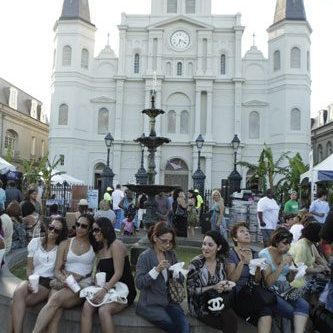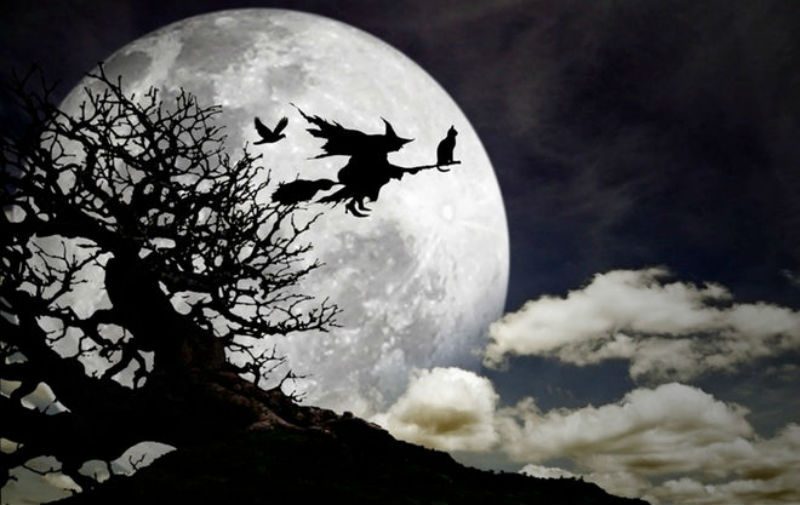
From Hillary to elderly cat ladies, women are still branded as witches. The History of demonizing women.
There are over eight million results if you Google “Hillary is a witch”: Articles, videos, images. Some date back as far as Hillary Clinton’s time as First Lady of Arkansas. Most in the first ten pages are recent – since she announced her run for president.
As the election nears and the prospect of her presidency becomes more likely, Clinton’s detractors – chief among them her opponent Donald Trump – have ramped up their attacks. Among those attacks is that she is a member of a coven, a member of the Illuminati, and of course, a lesbian.
On Oct. 25 the Daily Mail published a story by an ex-lover of Bill Clinton’s insisting Hillary is a lesbian. Before the final presidential debate, conservative talk show host Michael Savage implored Trump to ask Clinton if she were a lesbian.
Savage said, “All he’s got to do is say, ‘Look, yesterday a big publication came out in the National Enquirer from a man who worked for you for many years which says that you had many women lovers while your husband was president, is that still true?’ It would bring the house down.
Tell me it wouldn’t bring the house down. ‘Do you still like women in that way?’ Nothing wrong with it. We’re not saying it’s morally wrong, we’re asking you if you still like women after what your husband did to you. [Trump] could even leave it that way, now that I think about it. He could say, ‘Because your husband continuously wounded your pride by having everything with a pulse in the Oval Office, we understand that you were injured by that, do you still like women in that way? Or is that all false? Do you care to address those allegations?’”
Trump didn’t ask the question. Nor did moderator Chris Wallace, despite the flurry of articles about Clinton’s alleged lesbianism in the news.
Witchcraft and lesbianism are often linked and have been since the days of burning witches at the stake. Both accusations harken back to centuries of women being accused of “unnatural” behaviour and act, which sometimes was (and is) as simple as not being married to a man or having too many cats.
Hillary Clinton has been called “the Devil” by Trump in the most recent debate – an assertion he has since repeated at rallies. She’s been called “a demon” by former presidential contender Dr Ben Carson, by Info Wars’ Alex Jones and by WikiLeaks founder and accused rapist Julian Assange. Editorial cartoons have pictured Hillary burning at the stake. And during the primary, Bernie Sanders supporters – who were supposed to be progressives – held “Bern the Witch” parties and sold “Bern the Witch” buttons, bumper stickers, mugs and T-shirts.
Women who transgress – who step out of the accepted mainstream role for women which remains heteronormative and back-seat to men even in 2016 – have been demonized since Eve allegedly took a bite of that apple. The misogyny of the 2016 election is itself historic, so it’s unsurprising that Hillary Clinton has been demonized.
But it’s also true in 2016 that women who are not poised to become leaders of the most powerful nation on earth are also being demonized. And for those women, the consequences can be deadly.
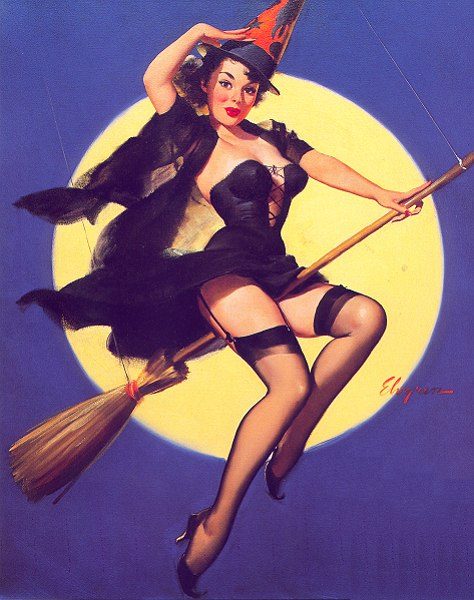
Halloween is often referred to as the national gay holiday. Few would argue it’s the holiday many of us love most. Halloween has always been a time when LGBTQ people could be themselves – trade the mask of the closet for the mask of who they really were. LGBTQ people could dress as they liked and take on the persona they wanted without censure.
Halloween is complicated, though, especially for women. The history of Halloween – All Hallow’s Eve, the night before All Saints Day, when the souls are said to freely walk the earth – is fraught for women. That iconic costume, the witch, is also a symbol. Women were the ones associated with witchcraft, which was heretical.
Women were burned at the stake, pressed to death, drowned, hanged. The first witch I ever heard of was the African slave, Tituba of Salem Village, who I read about as a child in a novel about the witch trials in Salem. As a college student, I discovered the work of radical feminist theorist Andrea Dworkin, who wrote about “Gynocide: The Witches” in her groundbreaking book Woman Hating.
In college, I was the host of the nation’s first lesbian radio program, Amazon Country on WXPN-FM in Philadelphia. The Halloween show was special for me: a time to memorialize our female and lesbian dead. I would read from Dworkin’s documenting of how women’s – and especially lesbian – lives were snuffed out in a holocaust of witch-burning. As Dworkin wrote, “Witchcraft was a woman’s crime.”
Dworkin estimated the number of witches killed during what is referred to as “the burning times” at nine million over 300 years. That number has been disputed, but there’s no question that tens of thousands of women were put to death for consorting with the Devil.
Dworkin and other feminist theorists and historians have always maintained that woman-hating/misogyny was at the core of branding women as witches and that has never been more clear than during this current election cycle. The labelling of women as witches and demonic meant they were Othered. And once Othered, anything could be done to them.
Can you recall another election where one opponent called for the assassination of the other and it wasn’t news for more than a few days?
Being labelled a witch meant a woman could be tortured and killed, usually, because she didn’t ascribe to her mandated role or who disobeyed the patriarchal systems of the time, notably the Church and the Crown. While some men were also tortured and killed as witches, male and female historians agree that women outnumbered the victims of the European witch craze 100 to 1.
The killing of witches was not, regrettably, relegated solely to the Dark Ages or even the centuries where it reached its apex in the 15th to 18th centuries. Witch hunts and killings continued well into the more enlightened eras, making their way to the American colonies.
Witch hunts and killings are still being perpetrated today in Africa, Asia and South America. Throughout the 1980s numerous women in the U.S., some of them lesbians, were accused of satanic ritual child abuse at daycare centres. One of the most notorious of these cases was that of lesbian teacher Kelly Michaels, who was indicted on 299 counts related to witchcraft in 1988 in Maplewood, NJ. Michaels was sentenced to 47 years in prison and served five of those years before a successful appeal in 1993.
Assertions that women are witches have never stopped, however. On Oct. 17, 2014, in India, Debjani Bora, a national gold medalist in the javelin and an Olympic athlete was accused of witchcraft and so severely beaten that the athlete fears she might not be able to participate in an upcoming Asian sports competition. According to BBC, Bora is far from alone in being accused of witchcraft. Witch hunts targeting women – especially single women or lesbians – are common in parts of India and a number of those accused are killed every year.
According to police reports, Bora was attacked by a mob that dragged her forcibly to a community prayer hall where a “public trial on charges of being a witch” ensued. Bora was accused of being responsible for the deaths of four people in her village, including that of a man who committed suicide.
Bora’s account of her ordeal is harrowing. She was lucky to escape with her life. At a press conference, Bora told reporters, “Instead of finding out why all the deaths occurred, some village elders suspected a witch was driving the people to death and organized a prayer. As the villagers were chanting hymns, one elderly woman identified me as the witch and shouted that I should be punished,” she said. “I was blamed for all these deaths in the village, wrapped up in fishing nets and beaten up severely.”
Indian police report that in the last five years nearly 100 women have been beheaded, burned alive or stabbed to death after being accused of witchcraft.
Salem, Massachusetts is the site of America’s own “witch craze.” In 1692, 19 witches were hanged on Gallows’ Hill – 14 of them women. Another 22 women died in prison after having been convicted of witchcraft, and two female infants born to the “witches” in prison also died. More than a dozen other women were tried but not convicted and several were named but not arrested while still others were named but not indicted. One woman was released from prison after the witch trials ended.
The death warrant for those convicted witches read “for the horrible crime of witchcraft perpetrated upon several persons.” The women pleaded “not guilty,” but that did not save them.
The dead “witches” are memorialized in Salem with both the Salem Witch Museum and a memorial called “The Stones,” which is quite moving. [insert video here] The Memorial consists of 20 rough-hewn granite benches cantilevered from a low stone wall surrounding an area adjoining the Old Burying Point.
The benches are inscribed with the names of the accused and the means and date of their execution. The Stones are inscribed with the plaintive pleas of the victims – the women – that they were not guilty, that they were innocent, that they were devoid of “such wickedness” as was ascribed to them.
The Witch Trials Memorial was dedicated by Nobel Laureate Elie Wiesel in August 1992, as part of the Salem Witch Trials Tercentenary. Quotes from the accused include Sarah Good, who said simply, “I have no hand in witchcraft,” and Bridget Bishop, who said, “I am no witch. I am innocent. I know nothing of it.”(Good gave birth to an infant daughter in prison, who died sometime prior to Good’s execution.)
For more than 40 years Salem had its own “official witch of Salem,” Laurie Cabot, a strong friend to the LGBT community there. Cabot, who practised the Craft and raised her daughters as witches, even served as a consultant on the iconic TV show Bewitched. In 2012, at the age of 80, Cabot closed up her witch shop and retired. Her memory and followers live on and witchcraft remains a thread that runs through Salem, past and present. Cabot has a Twitter account from which she tweets her witchy suggestions.
Thursday, October 27; Wear Black. Do majick, rid the world of evil.
— Laurie Cabot (@LaurieCabot) October 26, 2016
The Salem Witch trials are often cited as an example of religious hysteria in the American colonies. Yet more than 300 years later, women – often lesbians – are still being sentenced to death for witchcraft and sorcery, some being burned at the stake, others being hanged, some beheaded.
The Atlantic published a series of in-depth articles on Saudi Arabia in which it revealed that women were being targeted by the country’s religious police force, the Committee for the Promotion of Virtue and the Prevention of Vice (CPVPV). Ryan Jacobs’ shocking report begins provocatively, with a naked “sorceress” attempting to escape through a window. She was reported to have flown like a bird and Islamic clerics who tried and sentenced her said this was a known trait of witches, Al Aribya reported.
The Atlantic detailed how in 2009 Saudi Arabia established a special Anti-Witchcraft Unit, noting: “The harshest place for witches, or rather, female foreign domestic house workers the government thinks are witches, maybe Saudi Arabia.”
Saudi Arabia also executes lesbians and witchcraft is often used as the excuse, as was the case for Fawza Falih, a Saudi Arabian woman accused of witchcraft in 2006 and condemned to death. Human rights groups rallied to prevent her execution, but Saudi Arabia announced her death in April 2011, saying she had died in prison.
It’s no surprise that the majority of victims of the Saudi Arabian religious police are women like Falih was. Falih was beaten and tortured into a confession. Many of the women being tried for witchcraft now in Saudi Arabia are young domestic workers from other countries who are not Muslim.
Saudi Arabia is a theocracy and only Islam is allowed. Women bringing their own religious beliefs with them from other countries are often viewed as witches. In May 2013, two maids were accused of casting spells on their employer and were sentenced to 1,000 lashes and 10 years in prison. Their crime: witchcraft.
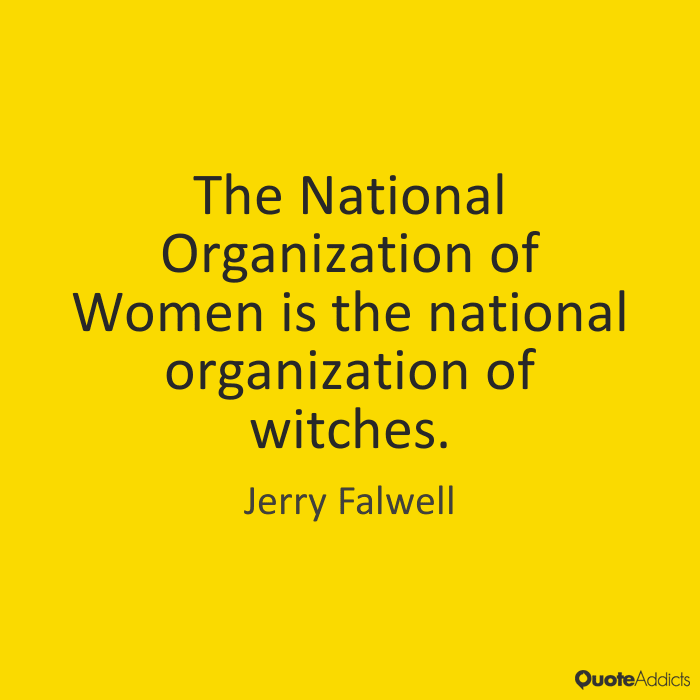
They were far from alone. According to Arab News, “at least 586 cases of magical crime, the majority of which were foreign domestic workers from Africa and Indonesia” were prosecuted in Saudi Arabia between 2009 and 2011 alone.
In December Amina bint Abdel Halim Nassar was executed for having “committed the practice of witchcraft and sorcery,” according to an Interior Ministry statement. Nassar was investigated before her arrest and was “convicted of what she was accused of based on the law,” the statement said. Her beheading took place in the Qariyat province of the region of Al-Jawf, the ministry said. The Times of Israel reported in September that Saudi Arabia continues to lead the world in the execution of witches.
In Indonesia, two young lesbians were beheaded after being discovered engaged in mutual masturbation in 2010. A second older lesbian couple was beheaded in 2014 for being witches and lesbians.
Last year two elderly women were burned to death as witches in Ghana and as recently as September a woman was burned to death as a witch in Peru.

As Halloween approached last year, the London newspaper The Telegraph reported that seven women, mostly elderly, had been burned at the stake for witchcraft in Tanzania. A local healer was among 23 people arrested for the killings. Relatives of the victims said they had been hacked at with machetes prior to being burned alive.
Tanzania killed approximately 600 elderly women on charges of witchcraft just two years ago in a purge of suspected lesbians while Gambia, Nepal, Cameroon, Uganda, Kenya and South Africa have all executed women for witchcraft in the past year. Witchcraft is also a crime in Iran, Papua New Guinea, and Congo.
In Dworkin’s “Gynocide: The Witches,” she writes about witches being accused of making men’s penises disappear. In 2008 in Congo, police arrested 13 women as sorcerers, accused of using black magic to steal or shrink men’s penises in the capital city of Kinshasa. Falih was accused of causing a man’s impotence.
Other surprises exist. Canada’s criminal code – section 365 – makes witchcraft and sorcery a crime. As recently as 2010, two women were charged and sentenced for practising witchcraft in Canada.

Witchcraft and the practice of Wicca have only been legal in the U.S. since 1985 when the U.S. Supreme Court ruled in Dettmer v. Landon.
Fear of women who practice witchcraft or worship the Wiccan religion may persist, but in the U.S. at least, women reclaiming their witchy roots is a growing trend in popular culture.
Lesbian witches have returned to TV in series like ABC’s Once Upon a Time, American Horror Story and Lifetime’s Witches of East End. (You really want to see Julia Ormond’s sexy Joanna Beauchamp and her former lover Alex, played by Michelle Hurd.) And of course who can forget Willow and Tara, the iconic witchy lesbian couple on Buffy, the Vampire Slayer?
Rev. Selena Fox, a practising witch in Wisconsin, was quoted in the Huffington Post saying Halloween is a time to spread the word about who witches really are and to dispel the stereotypes that surround witches, witchcraft and Wicca.
Fox told HuffPo, “Stereotyping can be hurtful to people who are involved in pagan religion. Some of the stereotyping in the past was used to torture and execute people. It was horrific propaganda.” But Fox also said, “Depictions of the ‘evil witch,’ with her hat and broom, can offer an opportunity to talk about the true nature of Wiccan spirituality,” noting “It can be a teaching moment.”
Lesbian witch Starhawk, who won a Lambda Literary Award for one of her many books on spirituality and Wicca, writes in Spiral Dance, “The word ‘Witch’ carries so many negative connotations that many people wonder why we use the word at all. Yet to reclaim the word ‘Witch’ is to reclaim our right, as women, to be powerful, to know the feminine within as divine…In the Craft, the cosmos is no longer modelled on external male control.”
Perhaps this is why witches continue to spook men as often as they did in the Dark Ages and are still being put to death in 2016, just like they were centuries ago. Perhaps this is why Hillary Clinton is perceived as a demon and a witch by so many men on both the left and the right – she’s challenged male sovereignty and male power. She must be a demon.
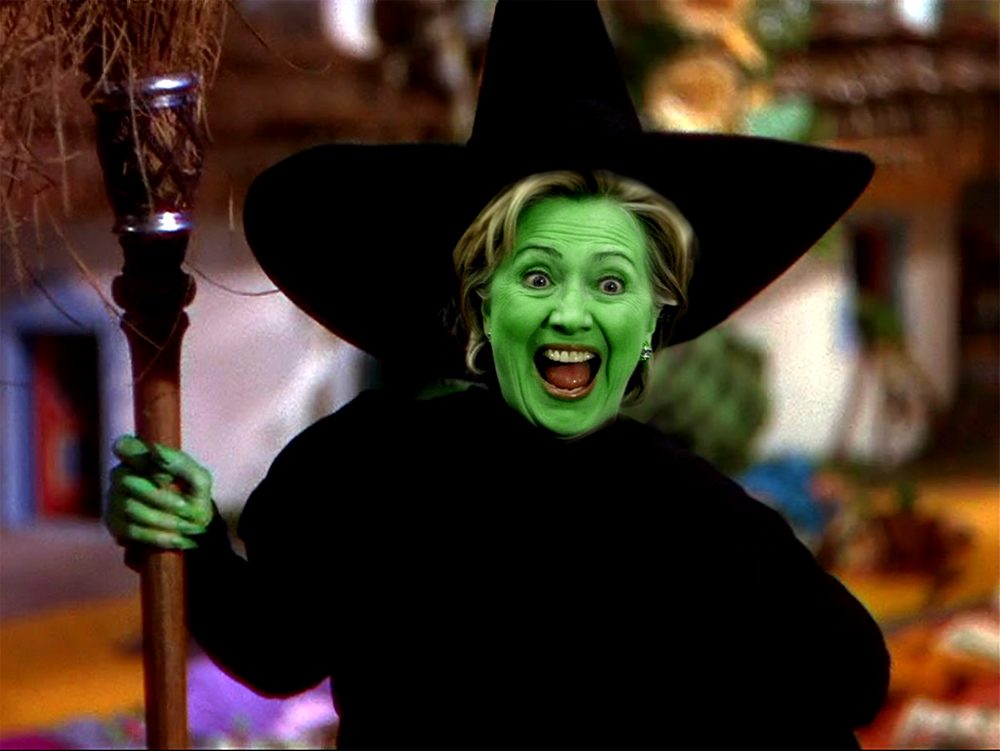
That so many women have been tortured and killed as witches make Halloween not just a time to celebrate female witchiness, but a time to memorialize, a time to mourn. All the women were put to death as witches because they stepped outside the lines, whether they were witches or not, our lesbian sisters among them must be remembered.
As we have discovered this past year, being a transgressive woman is still a dangerous choice. As long as there are women who refuse to live within those constricted norms, there will be men – some in service to the state, some merely in service to themselves – who will reject that notion and seek to stop them.
Lesbian poet Amy Lowell wrote romantically of witches, “Witches are moon birds. Women are the women of the false, beautiful moon.” But Amy Sedaris speaks to a more transgressive witch, a witch for the 21st century: “Most people think witches are a coven of lesbians dancing naked in the forest celebrating the semen stolen from imprisoned hypnotized males, which they then use to inseminate one another using turkey basters in order to create a legion of demon babies. Well, that’s only part of it. We are also active in community outreach programs.”
In the end, witchcraft and the accusations thereof are neither romantic nor something to joke about, as we have learned from the fact that women are still be Othered around the globe and killed for it, still, in 2016, as witches. As Joss Alexander notes: “This was dangerous talk in these enlightened times, a wise woman would never be too clever. The accusation of witchcraft had rid many men of an ugly wife.” Or a political rival.


